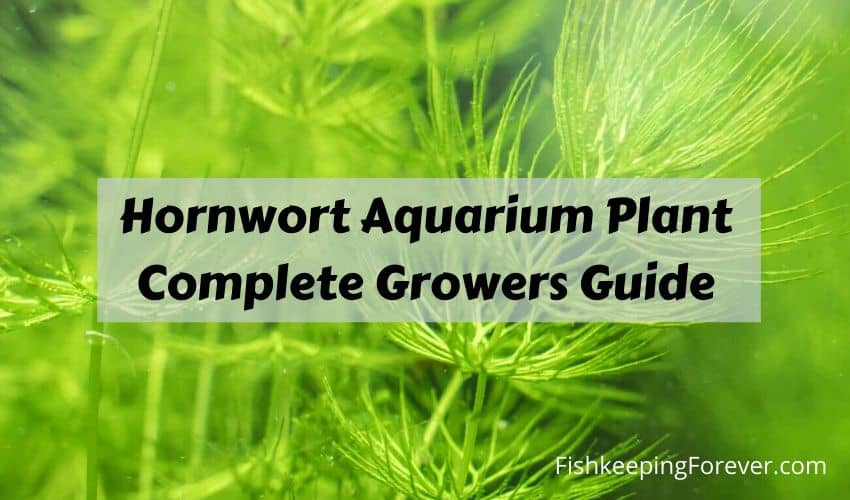Hornwort is a common aquatic plant that comes into its own when utilized in aquascaping. These small plants are very popular and can be found in almost every continent. They are particularly abundant in North America where it grows in slow-moving bodies of water. They are a diverse group of plants with up to 300 specific species identified.
Hornworts are a great freshwater plant to have on hand to create your ideal aquarium. In this handy guide, we cover everything you need to know to master the successful cultivation of this popular freshwater plant.
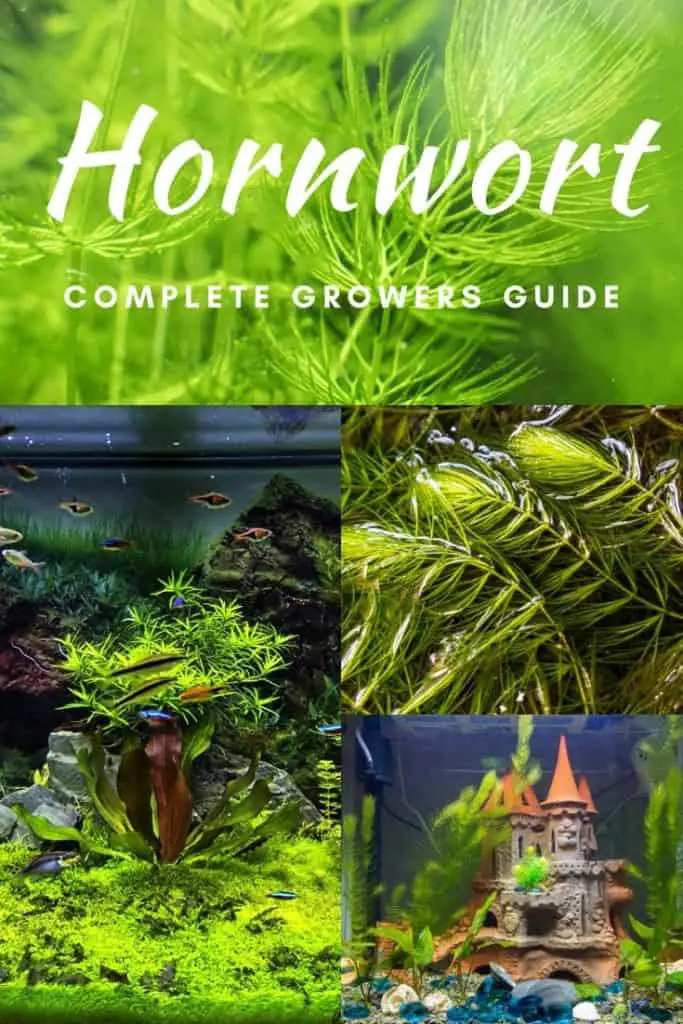
Table of Contents
Name(s)
Hornwort derives its name from the ‘horn’-like sporophytes it bears, which are its reproductive structures. and characterize its peculiar means of multiplying. It is a common choice for aquaculture projects of all sizes and is known by a variety of names, as listed below:
- Ceratophyllum demersum – (Ceratophyllum is a genus or family of marsh or pond growing flowering plants)
- Rigid hornwort
- Coontail
- ‘Coon’s tail’
Species Profile
| Common Name | Hortwort |
|---|---|
| Genus | Ceratophyllum |
| Size | Average size 10-24 inches |
| Care Level | Easy |
| Water Conditions | pH 6.0-7.5, Temp 55-85°F |
| Lighting | Moderate |
| Propagation | Side Shoots |
| Placement | Mid Level - Background |
| Cost | $3-6 |
| Food | C02 is not necessary but liquid fertilizer is a good option. |
| Growth rate | Fast |
Description
This spiky, bushy plant is a popular choice for the novice aquarium owner, adding color, movement, and dimension to your tank. This near rootless floating aquatic plant will work just as well in cold water tanks as tropical ones and is incredibly hardy.
It consists of long stems surrounded by whorls of six to twelve spiny green leaves which are stiff, sturdy and can help to anchor the plant as well as provide hiding places and interest for your fish. One plant has many stems that grow longitudinally with branches at each node. It can grow off your plant substrate or free float in the tank.
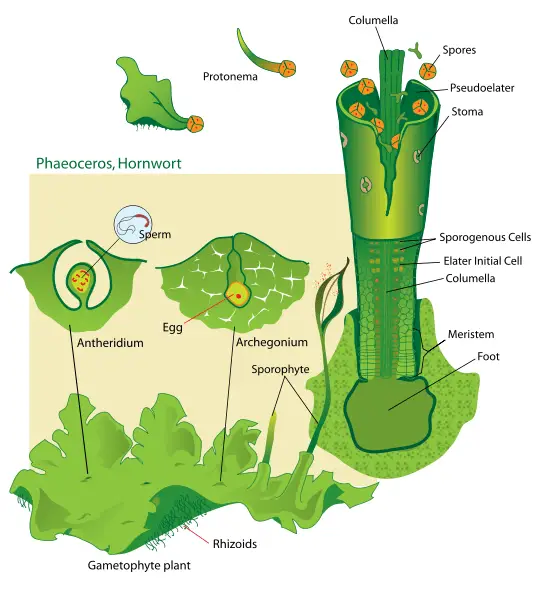
Hornwort is a true workhorse of your aquarium tank, offering several key benefits to make your aquarium a healthier place:
- Clarifies your water
- Works as a great buffer
- Increases oxygenation
- Strips excess nitrogen from your aquarium environment, leaving no room for unwanted algae to proliferate.
- Use it as a nitrogen sponge to save your tank from crashing!
- Sanitizes your water
Dimensions
The stems of Hornwort can exceed 3 meters if growth in unimpeded. Typically stems are up to 60 centimeters long with many side-shoots adding to the bushy presentation of the plant. The thin, brittle leaves are between 0.8 and 4 centimeters in length. Typically Hornwort can be purchased in 10cm lengths for planting.
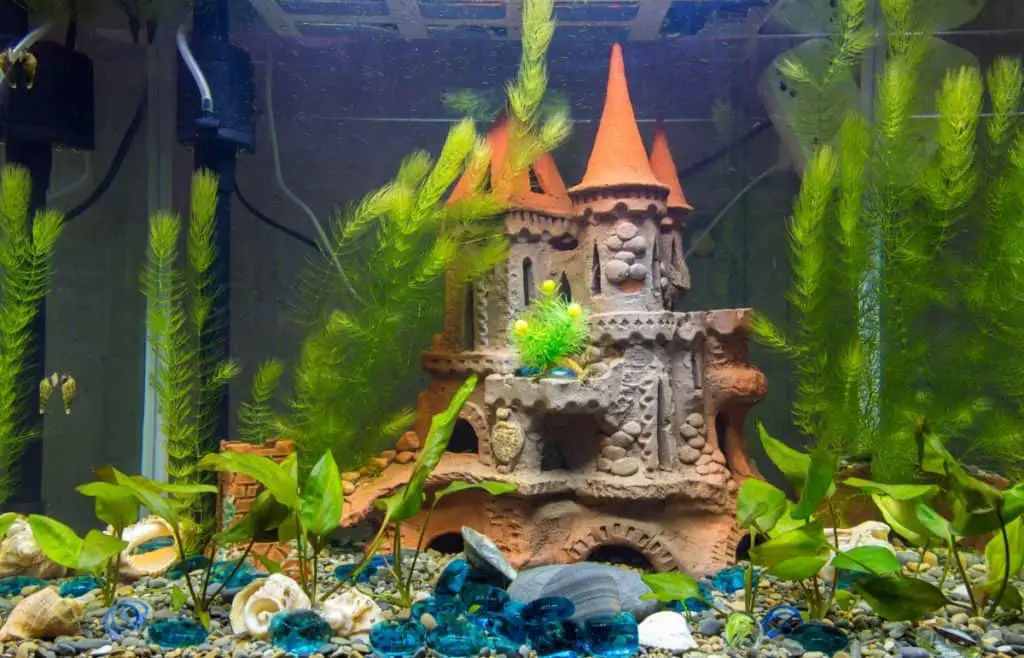
Growth
Ceratophyllum demersum is well known as a voracious feeder and grower. In natural habitats, it can be extremely invasive and has been designated a weed in Australia and New Zealand. It is very easy to grow and makes few demands. Adequate carbon dioxide and light will produce abundant growth which may have to be kept at bay by pruning.
Lighting should not be too intense as this produces stringy growth with the spines spaced out. If temperatures are too high this can also cause shedding of the spiny leaves. Hornwort stems grow at a rapid rate but have a tendency to shed its needles towards the base of the plant when planted or stressed, which can be unsightly and difficult to clear.
Ideal Water Chemistry
Ceratophyllum demersum tolerates a broad range of water conditions and even improves the conditions of water in which it is placed. Its optimum pH is between 6.0 and 7.5 with a water hardness of between 5-15dGH. One of its key benefits is that it is adaptable and will be able to handle water values at the extremes of its optimum range.
Hornwort Optimum Temperature
Ceratophyllum demersum can be grown in outdoor ponds and so is hardy enough to thrive in unheated tanks as well as tropical aquaria. Its ideal temperature range is 15 Celsius to 30 Celsius (59 – 85 Fahrenheit).
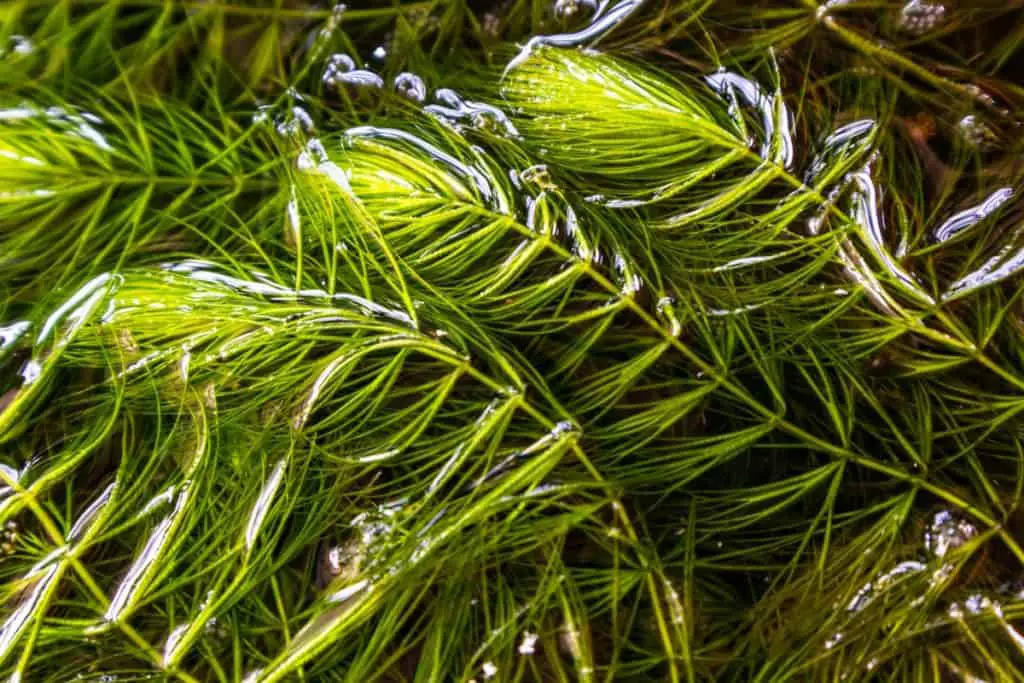
Choosing A Substrate For Hornwort
Hornwort fares best when free-floating, as attempts to plant the Hornwort can lead to loss of the leaves at the base of the plant. If it must be ‘planted’ it is well worth cutting off the tips of the plant and planting them for a better appearance. It can work with all substrates, particularly fine sands.
Aquascaping Hornwort
Ceratophyllum demersum is easy to care for, but its prolific growth will keep your scissors busy with trimming and pruning. Along with the benefits mentioned above, Hornwort is a great addition to tanks where you are raising fry or young shrimp that can shelter and feed safely between the tough spines.
Finding a practical way of aquascaping with Hornwort can be difficult because its growth can overtake other plants. Planting does not always produce the best results but floating Ceratophyllum demersum adds interest and shade to your tank.
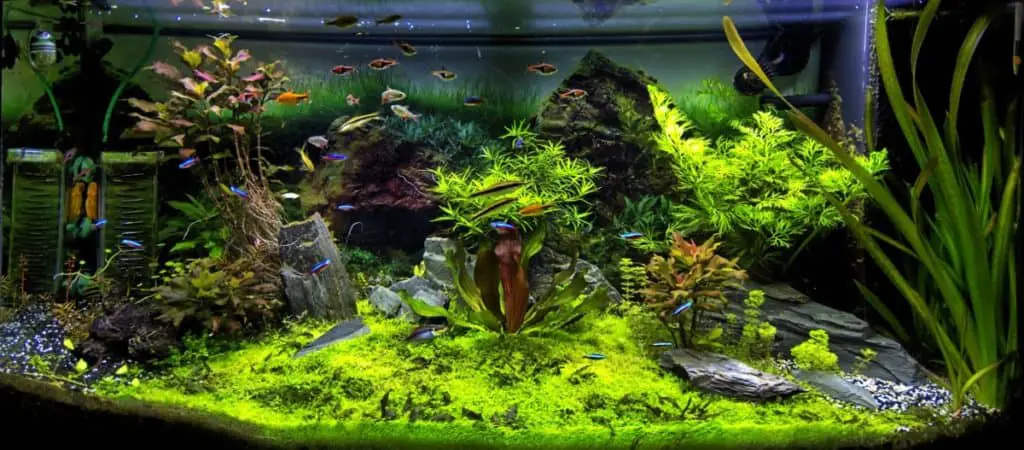
Consider what will work best for your fish as those that prefer the mid to lower levels, such as loaches, will prefer planted or anchored Hornwort. Because the shed leaves generate debris, Ceratophyllum demersum should be planted away from filters.
Keep Hornwort under control to prevent it from crowding out your tank or blocking out light if it is floating. Look out for shedding which is usually more frequent initially, but subsides as the plant becomes established unless a stressor is present.
If you are growing Hornwort with other plants, you will need to ensure that each one gets fed! Ensure that you fertilize adequately with solid or liquid feed. Use it as a background plant in your aquascaping and let other plants such as Ferns and Cryptos come to the fore.
Propagation Of Hornwort
This is an incredibly easy plant to propagate, meaning that you do not require much of it to get started. Hornwort uses vegetative fragmentation to propagate; meaning that when you cut a piece of an existing plant off, the cut piece will grow into a new plant.
Side shoots also can become detached and give rise to new plants. In the latter part of each year, you may find that your Ceratophyllum demersum develops buds that detach and form new plants during the spring.
Read our Complete Aquarium Plant Guide Here!
Conclusion: Hornwort Aquarium Plant
Don’t let this delicate looking aquarium plant fool you. It’s tougher than it looks and will add many benefits to your aquarium and the inhabitants.
Just remember to remove any dislodged leaves as they do have a tendency to block your filter. It can provide some essential cover and safety for small and baby fish as well as looking very attractive.
- Best Aquarium Plant Substrate Review 2022
- 18 Benefits of Marimo Balls ( How many per Gallon? )
- 11 Best Plants for Betta fish
- Top 7 Best plants for baby fish
- 9 Best Plants for Guppies ( Freshwater Aquarium Plants )

I have been working in the tropical fish industry for over 30 years now and I’m still learning. Everyday is a school day in this hobby. In my spare time I play golf very badly!


